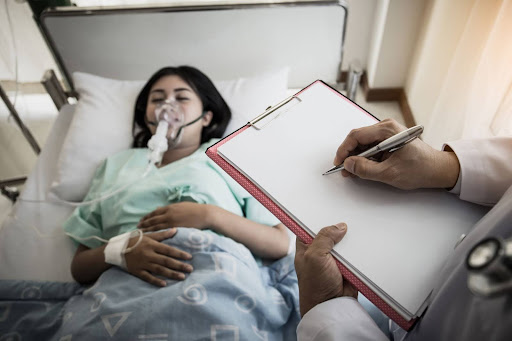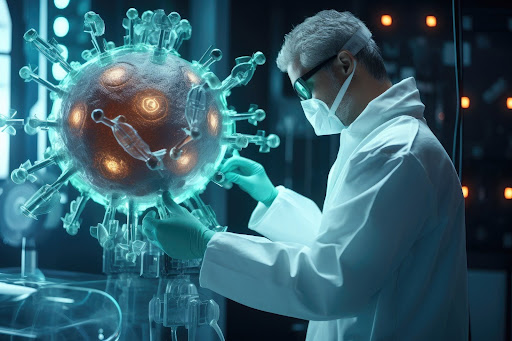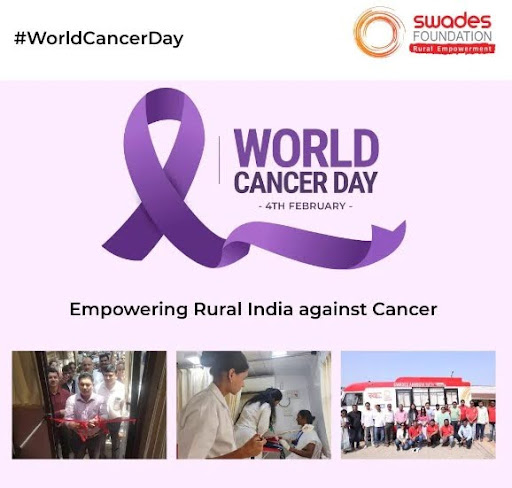At the beginning of 2024, as is the case every year, the gyms were flooded with new members, people took up yoga, decided to watch what they eat etc.
How many of us still continue to follow the above activities today? Hardly any, right?

Inculcate a healthy lifestyle.
We may not be aware, but there are multiple conditions, gradually increasing globally which are potential silent pandemics in the making. Non-communicable diseases including Diabetes, Hypertension and Cancer are some of these.
Statistics and global impact of cancer
Deaths from noncommunicable diseases, including cancer, have increased from 57% in 1990 to 74% in 2019 in both men and women (and in women specifically from 58% to 76%) over the past 30 years. By the year 2019, non-communicable diseases were responsible for three out of four deaths worldwide. Today, cardiovascular disease and cancer are the leading causes of premature death among women in more than 130 countries, 33 with cancer ranking first in 82 of these (including Brazil and China).
Cancer ranks in the top three causes of premature mortality among women in almost all countries of the world. In 2020, 9·23 million women worldwide were diagnosed with cancer, and 4·43 million women died of cancer. By 2040, these numbers are projected to increase to 13·3 million new cases and 7·1 million deaths, representing a 44% increase in new cases and a 60% increase in deaths. 1·5 million deaths could be averted through primary prevention or early detection strategies, while a further 800000 deaths could be averted if all women everywhere could access optimal cancer care.
The World Health Assembly Resolution, “Cancer prevention and control in the context of an integrated approach”, was adopted by 194 member states in 2017. It drew attention to the increasing burden and economic impact of cancer, estimated to cost US$1·16 trillion a year (a number expected to grow exponentially), and for which there are scant resources.
The cancer burden continues to grow globally, exerting tremendous physical, emotional and financial strain on individuals, families, communities and health systems.

HPV and Hepatitis B vaccinations help to prevent certain types of Cancer.
Cancer also has a wide range of social consequences. A recent analysis showed that in 2020 alone, there were an estimated 1 million maternal orphans (children left motherless) due to a death from cancer. Most of these children lost their mothers due to breast cancer (25%), cervical cancer (20%), or upper-gastrointestinal cancer (13%), and most maternal deaths occurred in Asia and Africa.
India’s challenge with cancer
India is estimated to have 4 million prevalent cancer cases in 2020 and is expected to reach 11.2 million by 2030, with a low survival rate of <30%. Women carry a disproportionate burden of cancer, accounting for 51% of new cases.
The three most commonly occurring cancers in India are those of the breast, uterine cervix and lip/oral cavity. Together, they account for approximately 34% of all cancers in India, and constitute a public health priority. Every year, 13.9 lakhs new cancer patients are registered in India. Out of which almost 8.5 lakhs die. In India overall, 1 in 9 (both sexes) people are at a risk of developing cancer before the age of 75 years i.e. 1 in 68 for males and 1 in 29 for females, whereas, 1 in 22 rural Indian males/females are at a risk of dying from cancer before the age of 75 years.

Early detection of cancer is vital.
Government initiatives for cancer in India
The National Programme for the Prevention and Control of Cancer, Diabetes, Cardiovascular Diseases and Stroke (NPCDCS) scheme was launched in 2010 to address the emerging threat of non-communicable diseases. Operational guidelines for NCDs and the Operational framework for common cancers was released by the Ministry of Health and Family Welfare in 2016 marking a shift towards prevention, early detection and management as part of a comprehensive primary health care package.
The NFHS 5 clearly highlights the humongous challenge of fighting the “Emperor of all maladies” – cancer, given the dismal 1-2% of people having undergone a screening test for cervical cancer, breast examination for breast cancer and oral examination for oral cancer at the national and state level (Maharashtra).
With India and 192 other UN member states having agreed to try and achieve the 17 Sustainable development goals and 169 targets set by the United Nations, achieving Goal 3 (Good Health and Wellbeing) Target 3.4: (By 2030, reduce by one third premature mortality from non-communicable diseases through prevention and treatment and promote mental health and wellbeing) seems to be a distant dream for majority of the countries.
With all this mind boggling data, the question bothering you all, would be, what can I do to fight the Emperor of all Maladies and how?
We at Swades have a slogan “Swa se bane Des” which translates to “Building a strong nation starts with you” (as an individual) and I would like to recommend that everybody starts with themselves! Charity too begins at home!

Swades Foundation’s Arogya Rath – A Mobile Medical Unit in collaboration with the DHO in Nashik is employed to raise awareness, screen and improve early detection of cancer in the rural community.
9 ways every individual can fight cancer
While healthy lifestyle choices can’t guarantee cancer prevention, they can help lower the risk of getting cancer. Below are some actions which can potentially provide us the necessary ammunition to fight and win the war against “The Emperor of all Maladies”.
1. Increase knowledge: Stay informed and acquire appropriate and correct knowledge about cancers which includes, understanding the common cancers, and associated risk factors, common signs and symptoms, etc. Staying informed, such as understanding risk factors, is a key step in cancer awareness and prevention. Some things like inherited high risk gene mutations which only explain 10-20% of breast cancers are beyond your control.
2. Diversify and improve diet: Eat a diet rich in fruits, vegetables, whole grains, and beans. These foods are loaded with vitamins, minerals, phytonutrients, and fibre. Limit intake of red meats, such as beef, pork, and lamb. Eating no more than 300-500 grams (red meat) per week helps prevent the onset of colorectal cancer. Shift to organic foods, given the evidence that inorganic chemicals and fertilizers used by farmers increases the risk of cancer.
3. Start exercising: Follow recommended guidelines for physical activity: 150 minutes of moderate activity, or 75 minutes of vigorous activity, per week. Stick to your exercise plan by establishing a support system and setting realistic goals. Maintain a healthy weight for your height and lifestyle.
4. Change habits
a. Stop smoking and tobacco consumption in all forms:
Smoking and tobacco use can also lead to cancers of the mouth, throat, and larynx. Less common cancers caused by smoking and tobacco use include bladder, oesophagus, and kidney. Smoking also exposes your loved ones to second-hand smoke. People who have regular exposure to second-hand smoke also have a high risk of developing lung cancer. 5-10 years after quitting smoking, the risk of developing mouth, throat, or larynx cancers is cut in half. The risk of developing lung cancer is cut in half 10-15 years after quitting.
b. Abstain from drinking alcohol, or drink it in moderation:
Alcohol in any form beer, wine or liquor has been linked to seven different cancers viz. liver, colorectal, mouth, throat, voice box, oesophagus (food pipe), and breast. For cancer prevention, it’s best not to drink alcohol, however people who choose to consume alcohol should limit these beverages to no more than 1 drink per day for a woman and 2 drinks per day for a man.
5. Undergo cancer screening: Screenings can detect some cancers in their early stages, when they are more easily treated and help in reducing mortality rates of cancers such as colon, breast, and lung cancer. Certain cancer screenings are available depending on your age, gender, family history, and lifestyle habits, such as tobacco use, viz. Breast cancer, Cervical cancer, Colorectal cancer, Lung cancer, Prostate cancer and Skin cancer. For certain cancers, self-exams can also be a helpful practice (breast cancer).
6. Limit exposure to sunlight and radiation: Frequent unprotected exposure can lead to skin cancer. When you are in the sunlight for extended periods of time, use sunscreen and wear a wide-brim hat and a long-sleeve shirt.
7. Get vaccinated: The Human Papillomavirus vaccine can prevent several kinds of cancer, and the hepatitis B vaccine can help prevent liver cancer. HPV vaccination is recommended for preteens aged 11 to 12 years, but can be given starting at age 9. HPV vaccine also is recommended for everyone through age 26 years, if they are not vaccinated already. National Technical Advisory Group for Immunization (NTAGI) has recommended introduction of HPV Vaccine in the Universal Immunization Programme (UIP) with a one-time catch-up for 9-14 year-old adolescent girls followed by routine introduction at 9 years.
8. Consult a doctor: When in doubt, or even with the slightest of suspicion, speak with your healthcare provider about what screenings may be important for you and when & where to get them. Every person’s healthcare journey is unique, and no one knows your body better than you do.
9. Create awareness: Talk about cancer to your near and dear ones. Make sure that everyone you know who are above the age of 30 should get themselves screened for non-communicable diseases including hypertension, diabetes and cancers. You could save a life or two!

A supportive community is crucial to dealing with cancer.
In conclusion, cancer is not just a statistic or a medical challenge; it’s a deeply personal and often devastating experience for those affected. It affects individuals, families, and entire communities, leaving a profound impact on lives along with adding financial stress on families. However, by taking proactive steps towards prevention and early detection, we can make a significant difference. Through education, healthy lifestyle choices, regular screenings, and vaccination, we can reduce the risk of cancer and potentially save lives. As we work towards achieving the United Nations’ Sustainable Development Goals, including Goal 3 for Good Health and Wellbeing, let us remember that behind every statistic is a person, a family, and a story. By humanizing the fight against cancer, we can inspire hope, support, and unity in our efforts to overcome this challenge and create a healthier future for all.
Dr. Ajitkumar Sudke, has served as Director, Health & Nutrition at Swades Foundation till Jan 2024. The opinions expressed in this blog are solely those of the author.
With over 20 years of experience in public health, Dr. Sudke has worked with UNICEF, led projects at the Bill & Melinda Gates Foundation, and guided large-scale health initiatives at Piramal Swasthya. Dr. Sudke’s work has been instrumental in improving health systems and outcomes for women and children across India.